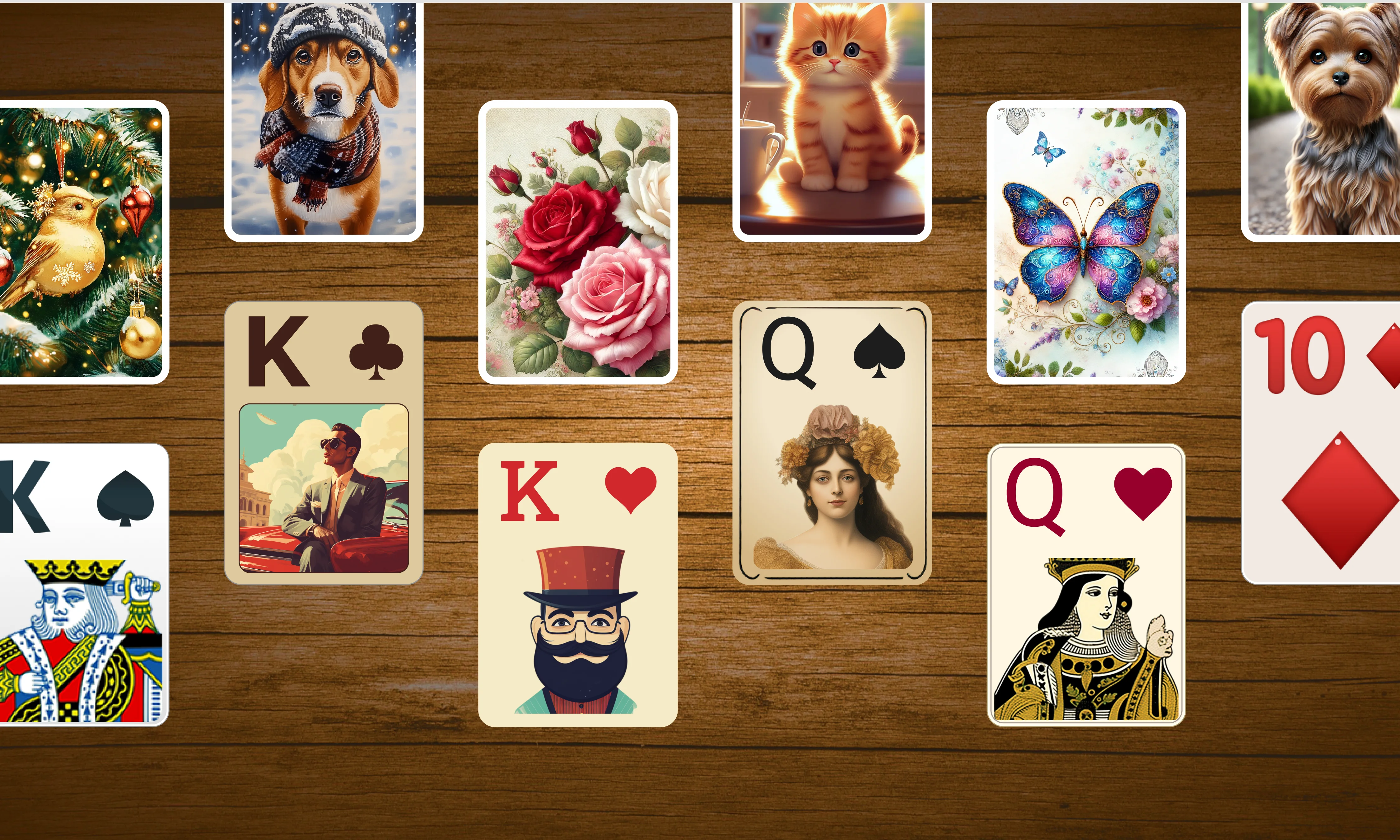The phenomenon of Solitaire could not go unnoticed in art and literature. One of the most celebrated novelists of the 19th century, Fyodor Dostoyevsky, famously depicted Solitaire in his 1866 novel The Gambler. This is one of the oldest recorded literary depictions of the game! Interestingly, The Gambler presents Solitaire in its original context, where it first gained popularity.
Solitaire also held an important place in 20th-century art. Numerous paintings from the first half of the century depict the game, such as Georges Braque’s abstract La Patience and the so-called “American scene painter” Raphael Soyer’s Solitaire, which portrays a young woman playing the game to pass the time as her lover sleeps.
By then, it was well established that waiting was almost synonymous with playing patience. This idea deeply influenced how Solitaire continued to be depicted, particularly with the advent of cinema.

By the time recognizable pop culture emerged, Solitaire was already deeply ingrained in society. Its influence is evident in how often it is subtly referenced in films, relying on audiences to recognize it instantly without explanation.
In the classic spy thriller The Manchurian Candidate (1962), a communist sleeper agent is instructed to play Solitaire — when the Queen of Diamonds is revealed, it acts as his trigger. Solitaire’s importance in the spy genre didn’t stop there. James Bond himself plays Solitaire to pass the time while awaiting a target in his first on-screen appearance in Dr. No (1962). Clearly, Solitaire was regarded as a gentleman’s game.
Interestingly, while Solitaire is often depicted on screen, it rarely receives much verbal attention. Filmmakers assumed that viewers would instinctively understand what they were seeing. Depicting Solitaire became a cinematic device to reveal elements of a character’s personality.
For example, in Jaws (1978), Hooper plays Solitaire on the ship's deck while awaiting the shark. This silent action tells us a lot about his calm and collected nature in the face of mortal peril. It also highlights his intelligence, subtly conveyed through his choice to play Solitaire rather than engage in idle activity.
In modern portrayals, Solitaire on screen carries a different meaning. The game has taken on a new role in the public consciousness.
Solitaire remains as relevant as ever, though perceptions of it have shifted. When Solitaire games were included in Windows in the 1990s, their impact was unexpected. According to Microsoft, around 35 million people still play their Solitaire games regularly.
This decision made the game more widespread, allowing people to play without a physical deck of cards or prior knowledge of the rules. Few could have predicted the enduring popularity of Solitaire, especially in an age of endless entertainment options. Yet, simple, meditative card games like Solitaire remain among the most popular ways to relax, accessible online in mere seconds.
However, Solitaire also gained a reputation as a time-wasting distraction. In the 1990s and early 2000s, office workers often played Solitaire on their computers, leading to perceptions of slacking off at work. This reputation was humorously reflected in The Lego Movie (2014), where a robot, supposedly busy, is caught playing Solitaire.
Though often played for laughs, this shift highlights a change in how the game is perceived. Once seen as a symbol of patience and determination, Solitaire can now sometimes represent idle procrastination. Yet, it’s important to distinguish between the game itself and the habits associated with it.
Solitaire requires mental effort, making it far from a mindless activity. Take, for instance, other forms of Solitaire made accessible through computers, such as Mahjong Solitaire. Traditionally a four-player game in China, its digital single-player version expanded its reach, demonstrating how Solitaire has evolved into a genre of its own.
All in all, Solitaire has had a far greater cultural and historical impact than it’s often given credit for. Whether as a simple way to relax or a way to pass time at work, nearly everyone recognizes Solitaire.
From its role in personal relaxation to its portrayal in various forms of media, Solitaire’s universality has left an indelible mark on our collective consciousness. So, let's dive into this timeless and addictive game right now!